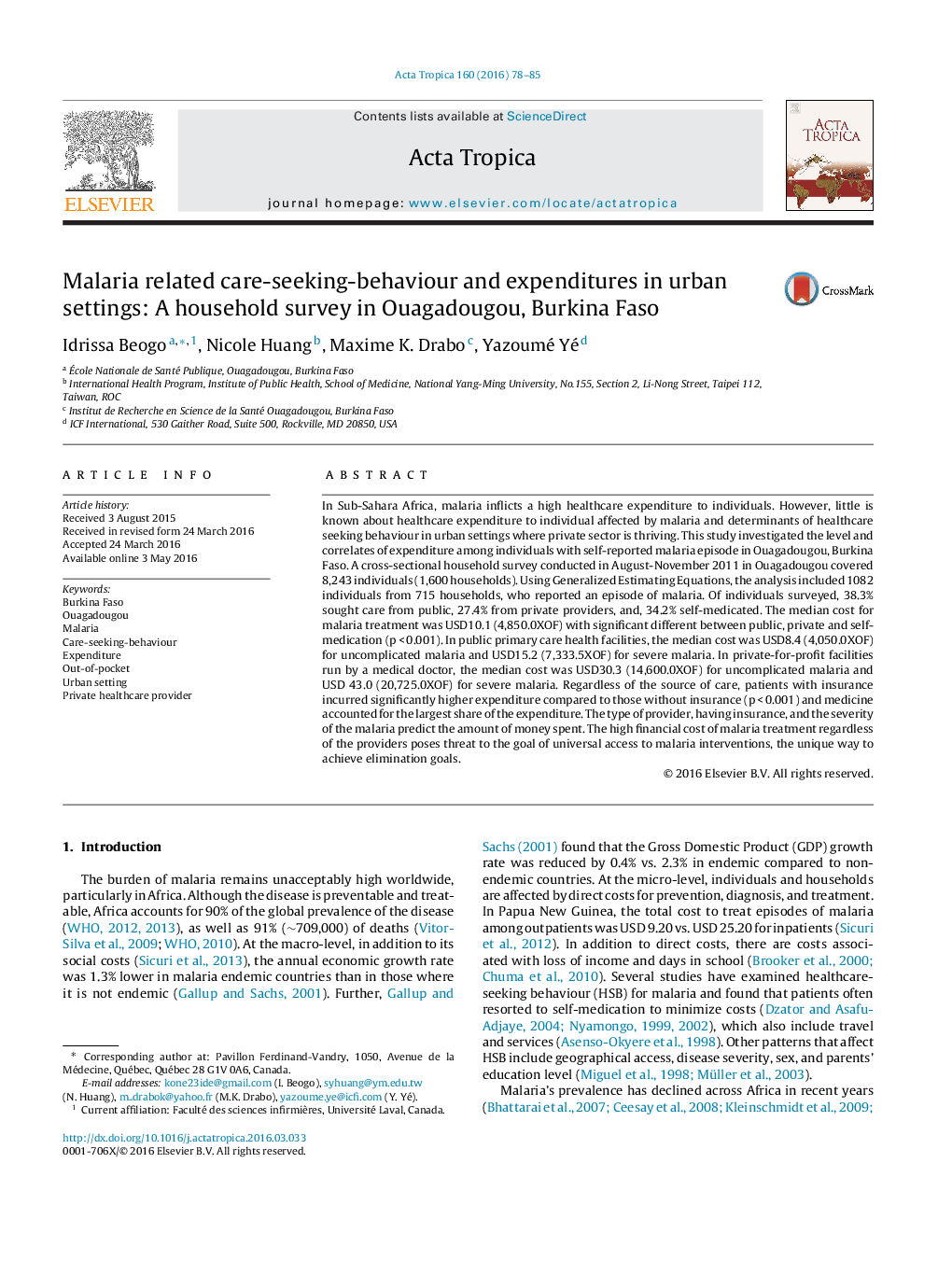| Article ID | Journal | Published Year | Pages | File Type |
|---|---|---|---|---|
| 3393715 | Acta Tropica | 2016 | 8 Pages |
What is known on this topic:•Severe malaria treatment cost several folds more than uncomplicated malaria and self-medication is the cheapest option.•Health insurance, higher level of education, and high income predict the use of private healthcare providers.What this study contribute:•Surprising high number of severe malaria reported questions the right usage of case management guideline in Ouagadougou.•Private providers represent a big share of healthcare market in Ouagadougou City, Burkina Faso, in malaria cases management.•Treating an episode of malaria at for-profit providers or holding an insurance scheme inflates expenditure incurred.
In Sub-Sahara Africa, malaria inflicts a high healthcare expenditure to individuals. However, little is known about healthcare expenditure to individual affected by malaria and determinants of healthcare seeking behaviour in urban settings where private sector is thriving. This study investigated the level and correlates of expenditure among individuals with self-reported malaria episode in Ouagadougou, Burkina Faso. A cross-sectional household survey conducted in August-November 2011 in Ouagadougou covered 8,243 individuals (1,600 households). Using Generalized Estimating Equations, the analysis included 1082 individuals from 715 households, who reported an episode of malaria. Of individuals surveyed, 38.3% sought care from public, 27.4% from private providers, and, 34.2% self-medicated. The median cost for malaria treatment was USD10.1 (4,850.0XOF) with significant different between public, private and self-medication (p < 0.001). In public primary care health facilities, the median cost was USD8.4 (4,050.0XOF) for uncomplicated malaria and USD15.2 (7,333.5XOF) for severe malaria. In private-for-profit facilities run by a medical doctor, the median cost was USD30.3 (14,600.0XOF) for uncomplicated malaria and USD 43.0 (20,725.0XOF) for severe malaria. Regardless of the source of care, patients with insurance incurred significantly higher expenditure compared to those without insurance (p < 0.001) and medicine accounted for the largest share of the expenditure. The type of provider, having insurance, and the severity of the malaria predict the amount of money spent. The high financial cost of malaria treatment regardless of the providers poses threat to the goal of universal access to malaria interventions, the unique way to achieve elimination goals.
Graphical abstractFigure optionsDownload full-size imageDownload as PowerPoint slide
